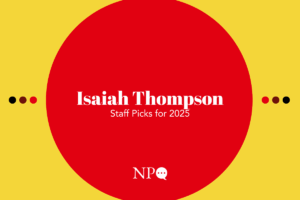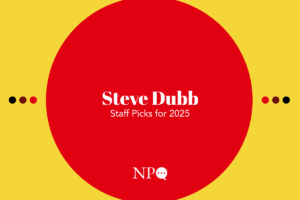
This article was updated on April 14, 2025.
Through executive orders, regulatory rollbacks, and court fights, the Trump administration is not only dismantling civil rights protections—it is turning the laws written to protect marginalized groups into tools of oppression.
As civil rights protections are increasingly undermined, nonprofits—particularly those rooted in racial justice, LGBTQ+ rights, immigration, and education equity—are confronting a difficult question: How do they remain faithful to their missions when the legal system designed to protect their work is being turned against them?
The Twisting of Civil Rights
Civil rights laws like Titles VI and VII of the Civil Rights Act of 1964 and Title IX of the Education Amendments of 1972 were specifically passed to remedy systemic inequality and discrimination. Their purpose has never been colorblind neutrality—it has been justice.
However, the Trump administration’s twisting of civil rights law subverts that intent, further marginalizing historically excluded groups and curbing the ability of advocates to mount legal challenges.
“It’s incredibly Orwellian,” Khadijah Silver, supervising attorney for civil rights at Lawyers for Good Government, told NPQ. “The way that they have twisted the language around the Civil Rights Act…to mean blind application of the law, with no analysis of circumstance and historical harms, which is a willfully inaccurate analysis.”
For example, while the courts—including the Supreme Court in Bostock v. Clayton County—have affirmed LGBTQ+ protections under Title VII, the Trump administration has undermined this ruling through executive order (EO) 14173, framing inclusive practices toward transgender individuals as violations of the very laws designed to protect them.
Scott Skinner-Thompson, a professor at University of Colorado Boulder Law School, told NPQ that, in effect, Trump has redefined “inclusion” as discrimination, rejecting Bostock and treating inclusive policies themselves as violations.
“[T]he Supreme Court’s interpretation is that federal anti-discrimination law protects transgender workers and [the Trump administration] is instead positing that inclusion of transgender people is a form of discrimination and, relatedly, concluding that any effort to combat racism is, in their view, racist,” Skinner-Thompson said.
This reinterpretation has sown confusion among legal advocates, who emphasize that both precedent and the plain language of civil rights law support inclusive policies. Yet the administration continues to frame such efforts as inherently discriminatory.
Weaponizing Civil Rights Law Against Nonprofits
Project 2025, the blueprint for conservative control over the federal government lays out the playbook. It calls for sweeping executive overreach; ideological weaponization of civil rights law; defunding diversity, equity, and inclusion (DEI) initiatives; and restructuring the Department of Justice (DOJ) and the Equal Employment Opportunity Commission (EEOC) to target, rather than protect, vulnerable communities. Nearly half of the playbook has already been implemented, according to the Project 2025 Counter.
The administration has actively targeted nonprofits that engage in civil rights advocacy. On day one of his presidency, Trump signed EO 14151, eliminating all DEI programs in the federal government and revoking prior equity initiatives. The next day, he signed EO 14173, extending this rollback to universities, private employers, nonprofits, and K–12 schools, framing DEI as unlawful discrimination and threatening funding for institutions that implement race- or gender-conscious policies.
“Trump says that he’s protecting civil rights and merit-based opportunity by ending ‘illegal DEI.’” Silver said. “Now, what’s so fascinating about this? It does not define DEI, it just vaguely contorts DEI to mean all of this negative prioritizing of certain groups over others, and the reality is entirely the opposite.”
Trump swiftly followed with additional directives: revoking federal recognition of transgender people, reinterpreting civil rights law to permit discrimination against trans kids, and enacting a federal “Don’t Say Gay” policy.
These attacks on civil rights have had a “tremendous impact in a variety of contexts,” Skinner-Thompson told NPQ. “Hospitals and schools are being policed by the federal government for any support they provide minoritized groups, [and] in some instances, are policing themselves in order to not draw the ire of the federal government.”
As Silver pointed out, “Much of what this administration says they’re combating is the ‘weaponization’ of government. But coming after those of us who are seeking to protect equal opportunity and equal protection under the law is blatant weaponization of government and actually rather vengeful.”
This weaponization of civil rights law has real-world consequences. Many organizations are self-censoring language related to race and gender; some face financial precarity as grant funding freezes. Others are reeling after critical research they relied on has been scrubbed from government websites.
Trump’s administration directly targeted nonprofits by restricting access to the Public Service Loan Forgiveness (PSLF) program for employees at organizations deemed “contrary” to its agenda. The administration has pressured law firms partnered with legal advocacy groups challenging civil rights rollbacks, threatening firms’ security clearance, government contracts, and prohibiting attorneys from accessing government buildings—directing the DOJ to pursue sanctions against these firms.
Legal advocates told NPQ that even firms not yet targeted are hesitant to partner with nonprofits on legal challenges to Trump’s directives, fearing political retaliation, loss of federal contracts, or reputational harm—a chilling effect threatening to undermine public interest litigation when it is most urgently needed.
One advocate at a legal nonprofit told NPQ anonymously: “I agree that civil rights law is being weaponized…against precisely the people that it was meant to protect.”
Philanthropy, too, appears to be affected.
Sign up for our free newsletters
Subscribe to NPQ's newsletters to have our top stories delivered directly to your inbox.
By signing up, you agree to our privacy policy and terms of use, and to receive messages from NPQ and our partners.
As Alphonso David, a civil rights attorney, co-counsel to the Fearless Fund and the president and CEO of the Global Black Economic Forum, writes in U.S. News, “Already, we’re seeing a chill in corporate philanthropy that promotes racial and gender equality, according to The Conference Board, an economic research organization. Meanwhile, some of the largest companies in America, including Pepsi, Target, McDonald’s and Goldman Sachs, have announced they are scaling back diversity, equity and inclusion programs, including some involving philanthropic work.”
In anonymity, one legal advocate told NPQ, “There is anecdotal evidence, a reduction in giving and layoffs, that supports the theory that all of these attacks against big law, against nonprofits, against…public service loan forgiveness…are also reducing philanthropy.”
In fact, LGBTQ+ nonprofits such as The Trevor Project, GLSEN, and The Human Rights Campaign (HRC) have fired staff, citing growing budget pressures and concerted right-wing attacks.
Nonprofit Resistance: What Comes Next?
The courts may not save us, but nonprofits have continued to resist—and advocates emphasized resistance is everywhere, from the courtroom to the streets, to shareholder meetings and zine drops.
“The more of us that stand together and stand up, inherently the more protected we are because it’s really hard to aggressively attack everyone all at once,” one advocate said.
While some simply refuse to abandon the DEI programs that align with mission and values, other nonprofits are developing broader strategic responses:
- Cross-Sector Collaboration
Cross-sector coalitions uniting litigators, policymakers, and organizers have emerged as essential for sustained resistance. Groups like Lawyers for Good Government, the Leadership Conference, PolicyLink, and Democracy Forward are breaking silos by fostering collaboration across legal, policy, and grassroots sectors.
- Strengthening Legal Partnerships
While some law firms have withdrawn due to political pressure, nonprofits can still proactively cultivate relationships with smaller or progressive legal firms and academic institutions less vulnerable to federal intimidation. Building a diverse network of legal supporters can mitigate risk and enhance advocacy effectiveness.
- Proactive State and Local Advocacy
With diminished federal protection, nonprofits should expand state and local advocacy. Advocating for state-level protections, such as strengthened anti-discrimination laws or local DEI commitments, provides a vital counterbalance to federal rollbacks.
- Narrative and Public Education
Nonprofits must clearly communicate the original intent of civil rights law—equity and justice—while publicly countering distorted narratives. Effective storytelling that illustrates the harm caused by the administration’s reinterpretations can mobilize public opinion and generate grassroots support.
- Building Resilience through Funding Diversification
Given the targeting of nonprofit funding streams, organizations should diversify funding sources, engaging grassroots donors, community foundations, and alternative philanthropy channels less susceptible to political pressure.
Judicial Uncertainty and Nonprofit Action
While district courts have successfully blocked or delayed many of Trump’s directives, these victories may be short-lived. Nonprofits, often with pro bono support from major law firms, brought legal challenges in districts receptive to civil rights claims. But as the Trump administration appeals these decisions to higher courts—many of which were reshaped during his first term—the risk of adverse legal rulings grow.
Legal advocates noted that we can’t depend on the courts to make similar rulings as they did during his last presidency because the legal landscape has shifted. Not only has Trump made the federal courts more conservative but his appointments of Justices Neil Gorsuch, Brett Kavanaugh, and Amy Coney Barrett have also tilted the Supreme Court, making the court less likely to check executive power.
Trump, Elon Musk, and conservative lawmakers targeted the judiciary by threatening to impeach judges who issue unfavorable rulings or even eliminate entire federal district courts. While many judges have publicly stood their ground, escalating attacks on the judiciary may eventually wear them down.
Thus, nonprofits cannot rely solely on the courts. But advocates underscore the necessity of proactive measures—litigation paired with advocacy, public education, and broad-based coalition building. And as nonprofits refine their strategies, strengthen alliances, and assertively reclaim the narrative around civil rights law to sustain their missions during a time of unprecedented threat, they do so together.
“It’s solidarity or death in a way that I’ve never seen us do,” Silver said. “This is the first time I’ve ever seen litigators and policymakers coming together like this, and organizers and everybody actually at the table together making these decisions.”
The question is no longer whether nonprofits can afford to speak out—it’s whether they can afford not to.
“We all just have to have courage and recognize that history is not somewhere out there,” Silver said. “That we are making history with every single action or inaction in this moment. We are the deciders as to what the world looks like. And I feel that a lot of people have abdicated their agency in this moment to people who do not care if they live or die.”











